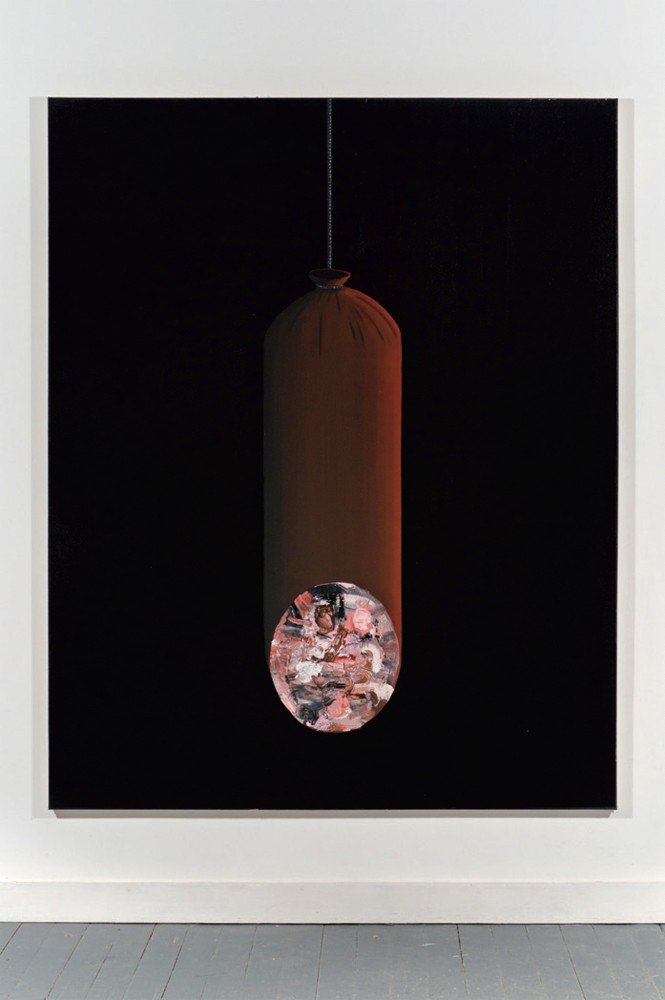Meating Place
Working in his Winnipeg studio at the end of 2012, Ufuk Gueray was hungry. The hunger was for change, not food. In one way, he had already had his fill. He was painting garish cityscapes and abandoned plazas with monstrous vehicles driving through them in an oversaturated Pop palette. “I was attracted to that sense of over-the-top colour. It was like eating too many sweets.” He felt he needed an antidote, something salty to offset all that flavour. He came up with was the idea of painting meat, and the container for that sea change was the common sausage. As a vegetarian, it was an unusual choice. He grew up in Germany where he had seen his share of sliced sausages, so it wasn’t necessary for him to bring meat into his studio. “I was mostly working from memory and imagination.”

Market, 2014, oil and acrylic on canvas, 68 x 54 inches.
He was also working from his considerable knowledge of art history. He knew he was entering a place that had been occupied by other meaty painters, including Rembrandt, Chaim Soutine, Francis Bacon, Sigmar Polke and Attila Richard Lukacs. He admits a particular fascination with Bacon’s Painting, 1946, that shows an umbrella-covered man in the foreground and a splayed carcass in the background.
He was also aware of the place where meat becomes flesh and where flesh meets paint. In painters like de Kooning, Joan Mitchell and Cecily Brown you can trace the shifting ways paint can read. He quickly figured out that within the limitations of his subject and his relatively restrained palette, there was the possibility of investigating a wide range of compositional and painterly devices. “I really like colour, so it was an interesting exercise to boil it down to those browns and greens and flesh tones. It allowed me to go through Abstract Expressionism, gestural abstraction, hard-edge painting and even still life.”
All those ways of making paintings are clearly evident in the “Market” series. The single sausage painted against a reddish ground, or the four smaller ones hanging in a deep Giotto green space are pound for pound, more contained than other variations on the same subject. Market # 1 is less gestural than controlled, as if Wayne Thiebaud had left the bakery and set up his easel in a butcher shop. But paintings like the four ovoids are mark-making kaleidoscopes, where the colours come together in a multi-directional rush. In Parts, a painting in five parts, he hints at his range. The floating slices are a riff on minimalism; the thin meaty line flanked by red columns is a zippy nod to Barnett Newman; there’s a touch of geometric abstraction; and the series ends with a Twombly-like doodle. The paintings are as conceptually smart as they are funny.

Untitled, detail, 2013, oil on canvas.
Gueray refers to a mixture of irony and sincerity in this body of work but you sense his taste for the sincere. “I think the irony is a tool to try and give some validity to painting in our contemporary context. The challenge is to find a way to make that happen. But it is important to recognize that these paintings are indicative of an honest love of handling paint and making paintings.” That’s food for painterly thought. ❚
Ufuk Gueray is nominated for the 2014 RBC Canadian Painting Competition.
For more from this issue, see Issue 131.

